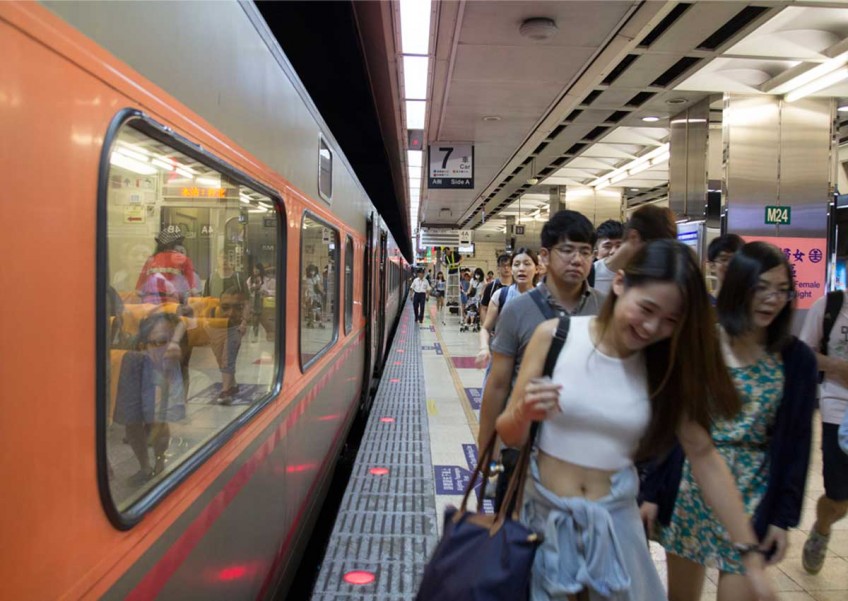Taipei airport rail line ready to roll

On March 2, Taiwan will officially launch a rail service that will allow visitors to travel from its Taoyuan Airport to central Taipei in just 35 minutes, finally catching up with Asian rivals such as Seoul and Hong Kong in offering direct rail links from the airport to the city.
The direct train ride to Taipei Main Station on the Taoyuan Airport MRT costs NT$160 (S$7.40) - travellers currently have to pay at least NT$1,000 for a 45-minute trip by cab into the city or take coaches, which can take up to 70 minutes.
More than 100,000 people have already tried out the service, which is now being tested before its launch. "It has been a bumpy ride and people waited for about 20 years. So we are relieved to be able to finally get this moving," Taoyuan Metro president Chen Kai-ling told The Straits Times.
Indeed, the roll-out of this express service caps a long and winding journey of 20 years - the slowness of which once made Taiwan a laughing stock for its inefficiency in building public infrastructure, as news weekly Yazhou Zhoukan noted. Planning for the line started in 1996 - when Mr Lee Teng-hui was president and Singapore had not started a train service to Changi Airport.

But Taiwan's ill-fated line got bogged down in delays after the company that won the tender hit the rocks. It was 2002 when the authorities finally ended the contract and the Taiwan government took over the building of the line. Construction began only in 2006.
But the completion date for the 51km line with 24 stations - initially 2013 - kept being pushed back because of technical glitches and poor coordination among contractors that included Marubeni Corp, the Japanese firm in charge of building the signalling system. Building costs ballooned ultimately to NT$113.85 billion (S$5.25 billion).
In the past few years when Mr Ma Ying-jeou of the Kuomintang (KMT) was president, political bickering between the Democratic Progressive Party-run Taoyuan government and the KMT central government also hobbled progress.
With the DPP now in power in the central government and Taoyuan, the airport MRT had a smoother ride towards the end.
President Tsai Ing-wen, when trying out the Taoyuan Airport MRT this month, credited the "concerted effort" by the central and local governments to "solve problems" to ensure the line's stability.
The airport rail link comes as Taiwan's main airport handled a record 42.3 million passengers last year and construction is under way for a fourth terminal, which will double the airport's capacity.
Visitors like Singaporean manager Kelvin Liu, 42, who usually takes a cab from the airport, welcomed the rail service. "On a good day, it is not too bad but the traffic into the city can be so bad that I get stuck in the cab for an hour or so, making the journey even more tiring," said the frequent visitor.
Analysts say the rail link will be a boon not only for Taipei but also its neighbouring cities. Taoyuan, for instance, has been earmarked not only as an aviation and industrial hub but also an "Asian Silicon Valley", which the government hopes will help revitalise Taiwan's economy.
Chung-hua Institution for Economic Research vice-president Wang Jiann-chyuan said the Taoyuan Airport MRT is crucial in helping Taiwan to improve mobility among its cities and stay relevant in the talent search.
He said: "If you want to build a tech hub, you need an easy flow of talent, goods and services. With a direct rail link, people can shuttle between places easily and will be willing to set up shop in satellite cities like Taoyuan."
Already, property prices in some areas served by the airport MRT have risen, with those near the Linkou and Chang Gung Memorial Hospital stations going up by nearly 7 per cent from 2015 to last year.

This article was first published on Feb 20, 2017.
Get a copy of The Straits Times or go to straitstimes.com for more stories.